The Dinosaur Park Formation (DPF) and the Hell Creek Formation (HCF)
We have been asked to give a brief explanation of the different dinosaurs associated with two famous North America rock formations. A comment on the different dinosaur faunas associated with the Dinosaur Park Formation (DPF) of southern Alberta and the Hell Creek Formation (HCF), which is mostly associated with the state of Montana but also outcrops in North and South Dakota as well as Wyoming.
The Badlands of the Dinosaur Park Formation (DPF) – Hunting for Dinosaur Fossils
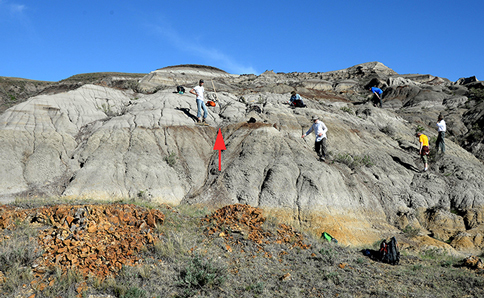
The Badlands
Both the Hell Creek Formation and the Dinosaur Park Formation are referred to as “Badlands”, this term is derived from the French phrase “les mauvaises terres” and dates back to the early years of exploration of these vast tracts of land. The term describes an area largely devoid of vegetation that is subjected to rapid erosion caused by wind, rain and running water.
The DPF is older, the strata were laid down between 76.5 and 75 million years ago in the Late Cretaceous (Campanian faunal stage). In contrast, the Hell Creek Formation is younger. The rocks were formed at the very end of the Cretaceous (Maastrichtian faunal stage) and the strata records the transition from the end of the Cretaceous into the Palaeocene, the first Epoch of the Cenozoic. The HCF spans approximately 66.8 to 66 million years ago and documents evidence of an extra-terrestrial impact event preserved as a thin clay layer that contains large quantities of the rare Earth element iridium, marking the Cretaceous-Palaeogene boundary, representing an extinction event denoting the end of the age of the dinosaurs and the start of the Cenozoic.
Looking for Fossils – Hell Creek Formation
Picture credit: University of California Museum of Palaeontology
The Ancient Environments – Dinosaur Park Formation and Hell Creek Formation
The strata that forms the DPF represents a coastal plan environment, crossed by numerous large rivers. The majority of the rocks are sandstones and mudstones, although there are layers of volcanic ash (bentonite), which resulted from the sporadic eruptions of volcanoes in the region. In the upper part of the DPF, coal deposits can be found (Lethbridge coal zone), representing deposition in a swampy environment.
The sea gradually encroached onto this coastal plain and the area was eventually flooded, resulting in the deposition of the marine shales that represent the Bearpaw Formation that overlies the DPF.
The Hell Creek Formation was created under similar circumstances. It too represents clays, mudstones and sandstones deposited on a delta, a low-lying flood plain crossed by many rivers. The HCF also has peaty, coal-like deposits (lignite), representing deposition in coastal swampy environments.
The Palaeoenvironment of the Dinosaur Park Formation
Picture credit: Julius Csotonyi
A Chasmosaurus and a Lambeosaurus feeding during the late evening, a typical scene representing the biota associated with the DPF.
The Palaeoenvironment of the Hell Creek Formation
Picture credit: Julius Csotonyi
A Triceratops grazes next to a palm tree on the coastal plain that is represented by deposits that help to make up the Hell Creek Formation of Montana.
Different Time Periods – Different Dinosaurs
Both the HCF and the DPF are famous for extensive dinosaur fossils. It is worth remembering that numerous other kinds of animal (and plants) are represented in the fossil record of these two formations. Although, the dinosaur fauna is similar between the DPF and the HCF, for example the terrestrial large herbivores are dominated by duck-billed dinosaurs and ceratopsians, the genera represented are very different.
In simple terms, the stage scenery might be similar and the cast of characters reminiscent but the actors on the stage are different.
Typical Dinosaurs from the Dinosaur Park Formation (Campanian Faunal Stage of the Cretaceous)
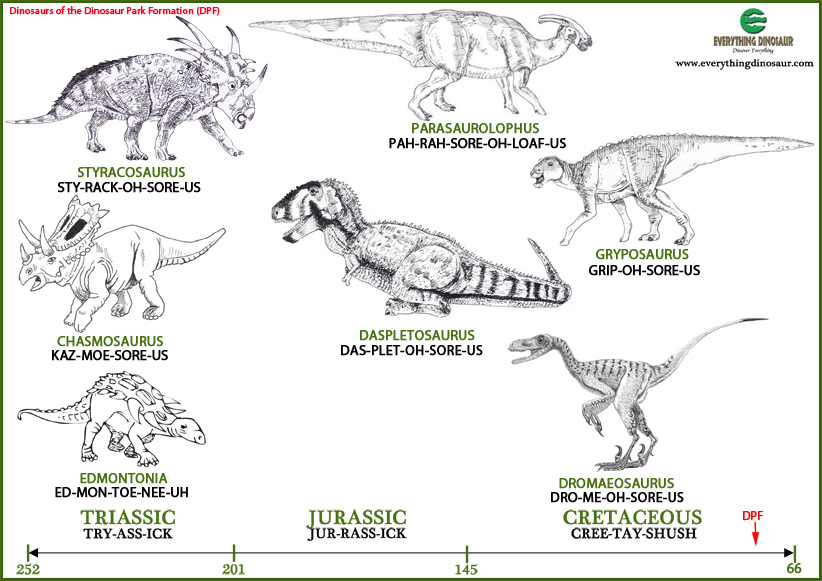
Picture credit: Everything Dinosaur
Typical Dinosaurs from the Hell Creek Formation (Maastrichtian Faunal Stage of the Cretaceous)
Picture credit: Everything Dinosaur
The images in the pictures (above) are based on various dinosaur models sold by Everything Dinosaur. To view the range of models available: Prehistoric Animal Models and Replicas.
We are looking forward to our visit to the Beacon Museum at Whitehaven (Cumbria). Everything Dinosaur will be taking visitors on a fossil hunt and we hope to be able to give away real dinosaur bones.
Visit the Everything Dinosaur website: Everything Dinosaur.


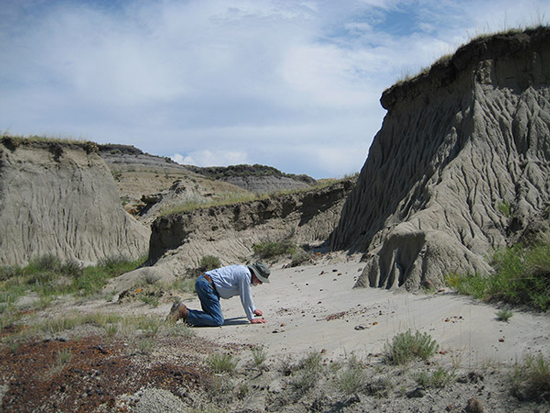
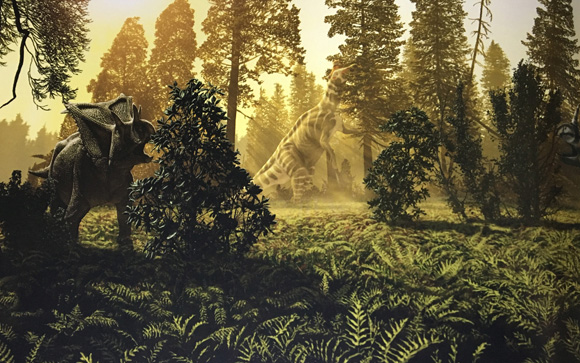
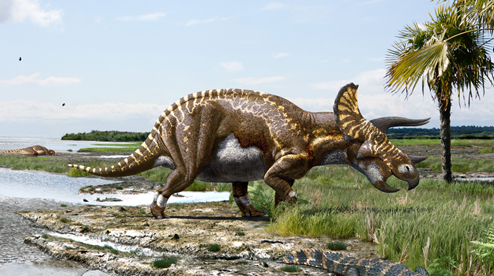
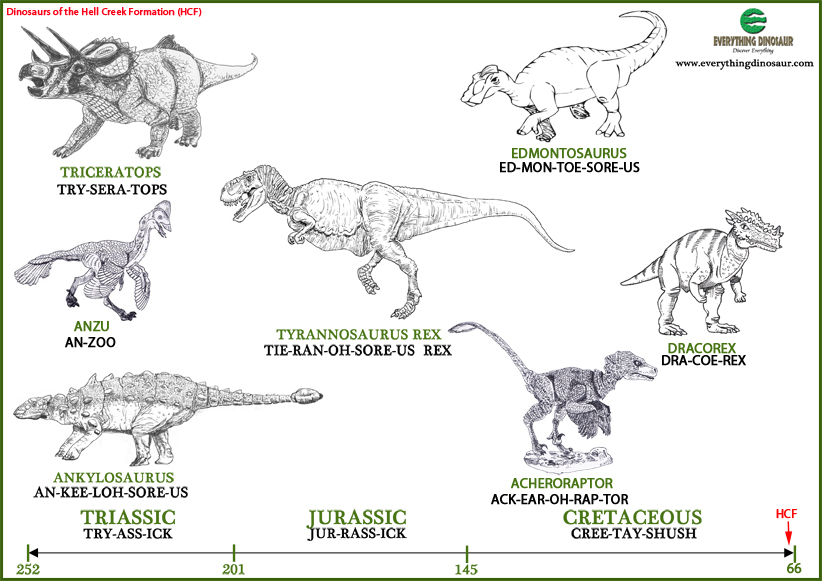




Leave A Comment